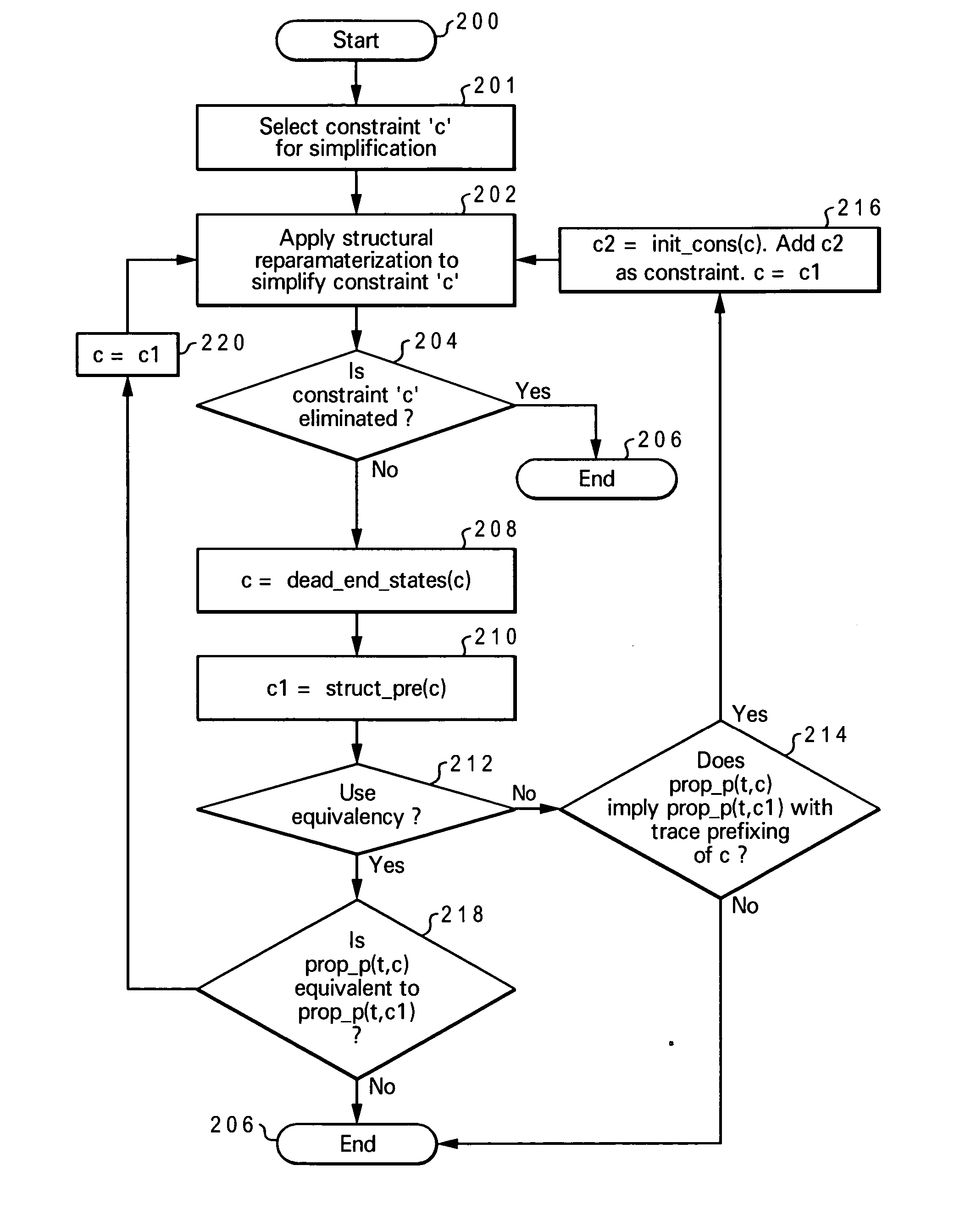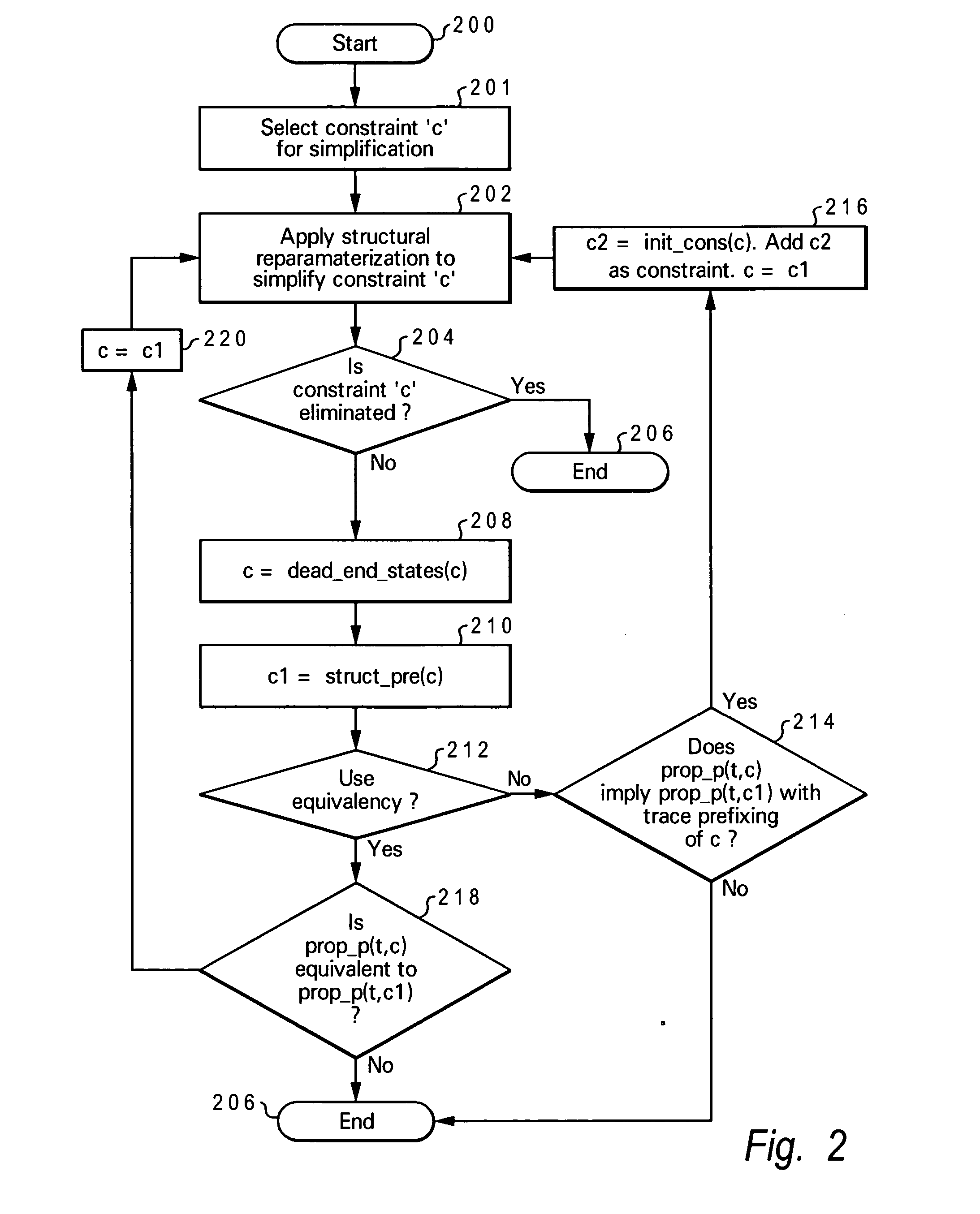Method and system for performing heuristic constraint simplification
a heuristic constraint and simplification technology, applied in the field of verification designs, can solve problems such as failure of functional design, loss of tolerance of microprocessor users, and failure of microprocessor users, and achieve the effect of simplifying the first computer-design constrain
- Summary
- Abstract
- Description
- Claims
- Application Information
AI Technical Summary
Benefits of technology
Problems solved by technology
Method used
Image
Examples
Embodiment Construction
[0017] The present invention provides a system, method and computer program product for performing heuristic constraint simplification. The constraint simplification method of the present invention provides a general approach to constraint simplification that is geared toward simplifying dead-end constraints and ultimately eliminating them from the verification problem (represented as a netlist). The present invention provides an efficient implementation for replacing a constraint with a preimage, heuristically trying to reduce the size of the constraint cone and enabling the elimination of the constraint through reparameterization.
[0018] The present invention is capable of yielding dramatic improvements to the verification of designs with dead-end constraints and its structural nature enables benefits to arbitrary frameworks, including testcase generation and synthesis. The approach of the present invention has proven very powerful in enhancing the verification of designs in the p...
PUM
 Login to View More
Login to View More Abstract
Description
Claims
Application Information
 Login to View More
Login to View More - R&D
- Intellectual Property
- Life Sciences
- Materials
- Tech Scout
- Unparalleled Data Quality
- Higher Quality Content
- 60% Fewer Hallucinations
Browse by: Latest US Patents, China's latest patents, Technical Efficacy Thesaurus, Application Domain, Technology Topic, Popular Technical Reports.
© 2025 PatSnap. All rights reserved.Legal|Privacy policy|Modern Slavery Act Transparency Statement|Sitemap|About US| Contact US: help@patsnap.com



